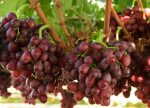By Ace Mutelo
Namibia shares a 3 200 tonnes quota for the export of beef to Norway with Botswana which is administered under two different quota-schemes.
The generalized system of preferences (GSP) quota of 2 700 tonnes is allocated to importers from Namibia or Botswana on a first-come, first-served (FCFS) basis and the EFTA/SACU quota of 500 tonnes is available through a Norwegian auction to Namibia and Botswana. In addition, the quotas are administered through firm-specific allocations within these two countries. Botswana and Namibia were approved for export to Norway in 1995 and exporters have since had preferential and duty-free market access. Export of bovine meat from Botswana to Norway started in 1996 while Namibia had some problems in the beginning with salmonella and did not export continuously on an annual basis before 1998. While the GSP quota was implemented in 1995, the EFTA/SACU quota came into force in 2008. The GSP quota only opened for the import of a few specific boneless beef products, such as steaks, fillets and other cuts of meat. The meat can either be fresh/chilled or frozen.
Norwegian market moving towards a surplus
Although the Norwegian population is growing (2020:0,5%), beef consumption per capita is steadily declining. On the other hand, domestic production is growing due to government incentives. This implies that by the year 2025, a balance between beef demand and supply may be reached or possibly even a surplus in the market. This scenario will lead to an increase in pressure on the Norwegian government to reduce unilateral tariff-free imports quotas under the GSP arrangement. Thus, the on-going SACU round of negotiations is critical for the migration of the GSP quota to the SACU/EFTA arrangement. However, the SACU/EFTA quota is based on the Norwegian beef import auction system that adds additional costs to the export value chain. It is therefore imperative for Namibia to negotiate the shift to the SACU/EFTA quota to be accompanied by an exemption from this auction mechanism.
Namibian beef accepted well in Norway
Namibian beef is well placed in Norway and commands high returns. In comparison with its counterpart Botswana, Namibia receives better prices. In 2021, Namibia exported its full quota to Norway and tapped into the Botswana quota as it could only utilise 865 tonnes out of the allowable 1 600 tonnes. As can be seen in the figure above, Namibia’s beef export value continued to increase over the years while Botswana’s revenues are on a steady decline due to production challenges and relatively lower price realisation from the Norwegian market. Although Namibian average export prices increased marginally from N$189 per kg in 2020 to N$190.75 in 2021, the value of exports increased tremendously due to an improvement in export quantity. On the other hand Botswana export prices increased marginally from N$100.10 per kg to N$101.40.
Additional opportunities to capture
The quantitative restriction is certainly the most significant challenge for Namibian beef exports to Norway. Given the unilateral nature of the GSP quota (i.e. the Norwegian government may at any time withdraw the GSP quota), it is important that efforts should be geared towards shifting a substantial quantity to the SACU/EFTA regime which could assure permanency and stability of Namibian beef exports to Norway. The Norway market is important for both Namibia and Botswana’s meat industries raking in N$520 million (2021) in export earnings. In terms of priorities, SACU would be better-off negotiating for a transfer of the GSP quota to the SACU/EFTA arrangement as a first priority to guarantee the quantity and thereafter negotiate for an increase in quota altogether. Secondly, a shift to first-come, first-served basis will be more advantageous than the current auction system with respect to the SACU/EFTA arrangement as it will allow exporters to choose importers that can provide the highest prices. SACU as a negotiating unit should be able to advance a request for cumulating inputs between Namibia and Botswana so that Namibia can access the Norway market with meat derived from Botswana cattle and vice-versa. This would strengthen value chain integration in the region and reduce the risk of non-fulfilment of quotas. A strong position should be taken on the dominance of prime cuts given Namibia’s limited supply of beef. Prime cuts serve to maximise the country’s returns and balance-off returns from other lower-paying markets where products such as offal are exported.
Conclusion
The Norway market is important for Namibia and provides good export earnings contributing to the stability of the livestock and meat industry. Given the permanency risk of the GSP quota system, the SACU round of negotiations with EFTA should place focus on securing the quota under the SACU/ EFTA regime on a first-come, first-served basis. Other opportunities that can be created include the possibility of regional cumulation as well as a general increase in quotas.
Ace Mutelo is Chief: Information Systems at Meat Board of Namibia










